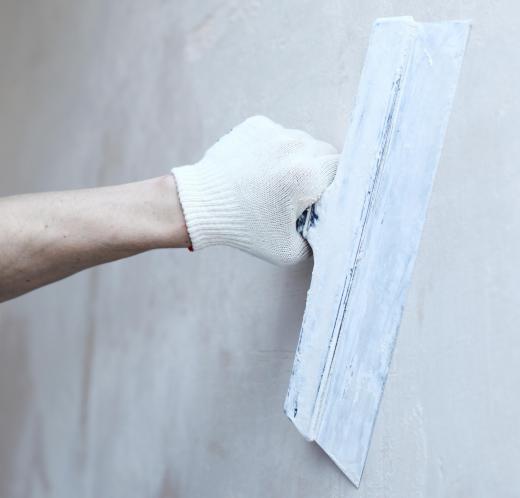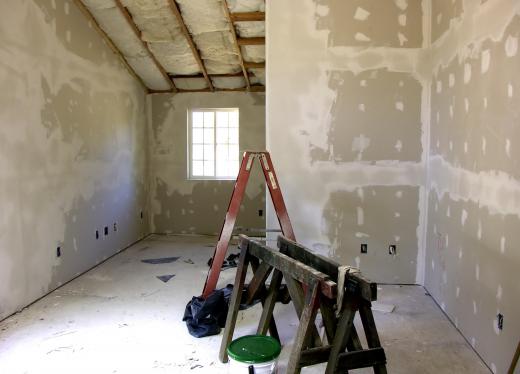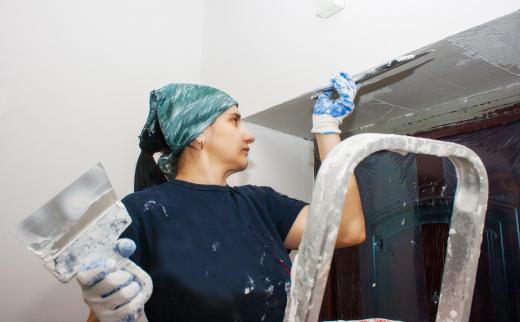Joint compound is a product used to fill the spaces between sheets of drywall and the depressions left by screws after installation or repair. Also called "mud" due to its thick consistency, premixed joint compound typically comes in buckets ranging in size from 1 quart to 5 gallons (about 0.9 to 3.7 liters). Larger, dry packages are also available, but the user must make up the mixture himself using water.
Typical drywall installation requires multiple sheets, as most walls are larger than even the largest pieces of drywall. Careful planning beforehand can minimize the number of pieces used per wall and reduce the number of seams. If the seams and screw depressions are not filled with joint compound, the finished wall will not be smooth and will therefore be unsuitable for painting or hanging wallpaper.

To properly apply joint compound to a new wall, the compound, joint tape, a joint taping knife and sandpaper are needed. Joint tape comes in both self-sticking and plain varieties. Self-sticking joint tape speeds the process up, but either kind can provide good results. Joint tape is not necessary for filling screw holes, as the holes must be completely filled with mud for a proper job.

Each seam in the wall must be covered with about 1/8 inch (0.32 cm) of joint compound, followed by plain joint tape. If self-sticking joint tape is used, the initial application of mud is not necessary. Smoothing the tape against the wall with the taping knife will force out any air bubbles and excess mud, leaving a smooth surface. When plain joint tape and mud are used for this first step, the seams must dry for 24 hours before moving on to the next step, sanding away excess mud and tape to further smooth the seam. Sanding at this point is not necessary with self-sticking joint tape.

A thin coat of joint compound should be applied over the seam and tape and onto the surrounding drywall. The total width of this layer should be about 6 inches (15.24 cm). Once this layer dries, a final sanding is necessary to completely smooth the surface of the drywall in preparation for painting or wallpapering.
Joint compound may also be used to repair small holes or depressions in older walls. Small cracks and holes only require a small amount of mud to fix, as screw holes from installation do. Larger holes or defects may require patching with a small piece of drywall, creating seams that must be treated the same way as treating seams in newly installed drywall.
